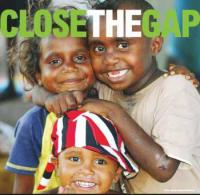Aboriginal responses to the conservative Australian government’s 2015-2016 budget, handed down this week, are starting to trickle in and, based on huge cuts to spending on indigenous people last year, most comment is gloomy.
A call-out to sign a petition argues: “How can South Australian Aboriginal communities remain open with 90% slashed off the required funding? No organisation, no small business and certainly no Community can stay open when it loses most of its income.
“SA Aboriginal Communities have been successfully running essential and effective programs for years providing opportunities for training, support, activities for children and youth, employment for local people, and many other types of community programs designed and run for the Communities by the Communities. With no funds for programs and administration /governance, how can Communities remain open?
“All South Australian Aboriginal Communities have been allocated less than 10% of the funding needed to run their Communities.”
The National Congress of Australia's First Peoples, widely regarded by them as an ineffective paper tiger, writes: “Expenditure in the Budget cycle on Aboriginal and Torres Strait Islander Peoples is difficult to gauge, as related Budget information is dispersed throughout portfolios and difficult to overview.
“This complexity effectively prevents transparency and accountability and generates misinformation and controversy.”
“Almost half a billion dollars was cut from Aboriginal and Torres Strait Islander programmes in the 2014-15 budget, with applications by a number of community-based rejected in the Indigenous Advancement Strategy (IAS), on the basis that there were insufficient funds available.
“The government clearly stated that advocacy funding for Aboriginal and Torres Strait Islander Peoples was to be cut.”
"Evidence shows that health is critical to achieving better education and employment outcomes. An investment commitment to Aboriginal and Torres Strait Islander health is an investment in the social and economic wellbeing of our communities."
A Close the Gap Campaign, which aims to close the health and life expectancy gap between the races, calls on government to restore cuts of up to $534.4 million over five years from the rationalisation of Indigenous Affairs programs, grants and activities administered by the Prime Minister and Cabinet and Health portfolios.
"Evidence shows that health is critical to achieving better education and employment outcomes. An investment commitment to Aboriginal and Torres Strait Islander health is an investment in the social and economic wellbeing of our communities."
It's been a year of rupture in Indigenous affairs, notes theguardian. The Australia online edition comments: “We’ve seen the power of solidarity in more recent times. Some of the worst decisions of the 2014 federal budget – the defunding of Aboriginal and Torres Strait Islander Legal Services and Aboriginal family violence prevention services – were turned around by a concerted effort by Aboriginal sectors, supported by non-Indigenous Australians writing letters to ministers, signing petitions, and publicly commenting on the issue.
“It is this goodwill, harnessed in solidarity with Aboriginal and Torres Strait Islander people, that could go some of the way towards levelling the power imbalance between the government and Indigenous people. There’s reason to believe that a widespread desire on the part of the broader community to support a better deal for the First Australians has existed for a while.”
The National
Aboriginal Community Controlled Health
Organisation (NACCHO),
representing Aboriginal community controlled
health services throughout Australia, notes that "The primary health care
sector that delivers
the best results for Aboriginal and Torres Strait Islander
People is the least funded.
“Funding is unrelated to population size or need, is not indexed for inflation or service demand and is not distributed equitably within and between the states and territories.
“NACCHO advocates for a change in the way healthcare funding is allocated, which re-distributes an appropriate share of mainstream health funds to ACCHSs, taking into consideration expected population growth, indexation and health need," comments NACCHO Chair, Mathew Cooke.
NITV News compiled an overview of how indigenous affairs were impacted by the 2014 federal budget, which “came as a complete shock to many indigenous Australians.
“For weeks leading up to the announcement, the government had signalled that too much money was being wasted on red-tape in indigenous affairs. The scale of the cuts on budget night was massive, with $534 million taken out of the Indigenous Affairs portfolio in what the government called a "rationalisation." It unveiled a new funding model for Indigenous organisations - the Indigenous Advancement Strategy.”
Background: Aboriginal Peoples and the impact of the 14/15 budget


Indigenous communities could close if NT government takes over
Remote Indigenous communities could close if NT government takes full control
$154.8m allotted in federal budget to Northern Territorz government to “take on full responsibility for delivering ... services in remote Indigenous communities”
Indigenous groups are warning remote Northern Territory communities could close after the commonwealth offered a one-off payment to cede control of them.
Approximately $154.8m was allotted in Tuesday’s federal budget to the NT government to “take on full responsibility for delivering municipal and essential services in remote Indigenous communities”.
More